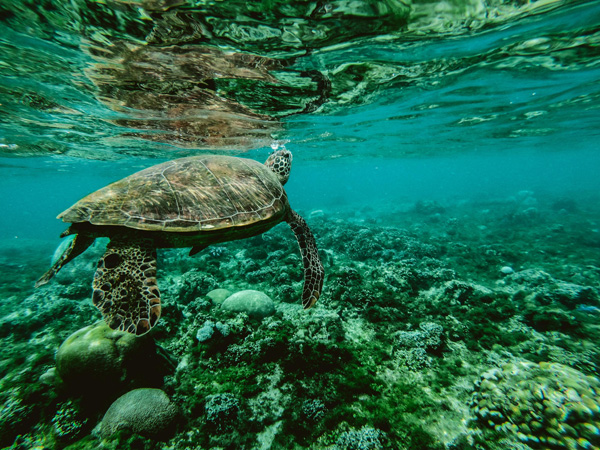Heatwaves threaten coral safety in multiple parts of the world, posing an urgent problem

[A sea turtle swims in the ocean. Photo Credit to Pexels]
Heatwaves occur when ocean temperatures exceed 90% of previously recorded levels, and cause many coral die-offs.
Since April 2023, ocean temperatures have been slowly increasing, and prolonged heat waves can last from weeks to years.
The impact of these heat waves is catastrophic for coral reefs, with an estimated 80% of coral reefs at risk of dying.
This trend is observed in the Atlantic, Pacific, and Indian Oceans, typically in the northern or southern hemispheres.
Places like the Carribean, Florida, and Egypt are experiencing severe coral bleaching.
The Caribbean has already started showing signs of a major coral bleaching in process.
In Florida, bleaching started in spring and intensified through summer.
According to the National Oceanic and Atmospheric Administration (NOAA), ocean heat levels are higher now than they have been in the past 150 years, with records being broken again after previous peaks in 2016.
Current ocean temperatures have risen to 21.1°C, largely due to human activities.
In 2023, 56% of corals have died due to bleaching, affecting 60% of ocean reefs.
Derek Manzello, a coordinator for the NOAA Reef Watch Program, reports that ⅔ of reefs out there are experiencing this phenomenon.
Heatwaves cause corals to expel the symbiotic algae in their tissue, and without algae, the corals essentially starve, which causes them to turn white and die.
When temperatures rise by 2-3 degrees, the algae start producing toxins.
This is called oxidative stress that turns the algae deadly for corals.
Coral reefs are essential for marine life as they provide food and breeding grounds for fish.
Heatwaves cause mass deaths and sudden migration for marine creatures, which impacts ecosystems such as kelpt forests and seagrass meadows.
Rising ocean temperatures, driven by climate change, also lead to the formation of carbonic acid in seawater, further increasing water temperature.
Greenhouse gases, like carbon dioxide, water vapor, and methane, contribute to the greenhouse effect and trap heat within the Earth’s atmosphere.
Human activities, including burning fossil fuels and deforestation, have increased these gases and worsened the problem.
Due to the massive amounts of coral dying and being bleached, tourist areas near affected reefs have closed, and organizations such as the Coral Restoration Community are relocating corals to tanks until temperatures decrease.
NOAA is collaborating with several kinds of organizations, especially with one called the International Coral Reef Initiative (ICRI).
The ICRI helps NOAA research and restore damaged reefs.
Other supporting organizations include the Coral Restoration Foundation, The Florida Aquarium, National Marine Sanctuary, the State of Florida, and Mote Marine Laboratory.
Their overall goal is to restore three million square feet of the Florida Reef, which is one of the largest restoration efforts ever undertaken.

- Joelle Oh / Grade 7
- Seoul Foreign School

![THE HERALD STUDENT REPORTERS [US]](/assets/images/logo_student_us.png)
![THE HERALD STUDENT REPORTERS [Canada]](/assets/images/logo_student_ca.png)
